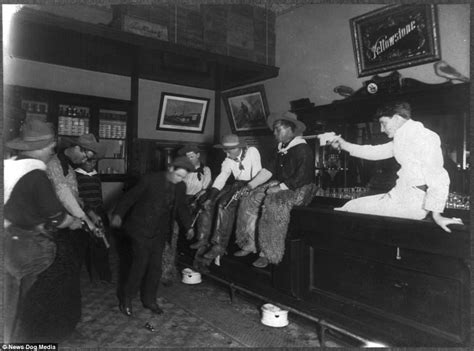
Boomer-generated strategies for combating loneliness, shared widely on social media, are drawing attention and even envy from younger generations facing their own struggles with isolation and social connection. The surprising tips, ranging from proactive social engagement to embracing new hobbies, are sparking a conversation about generational differences in addressing loneliness.
The rise of viral content detailing how older adults are tackling isolation has resonated with millennials and Gen Z, many of whom are experiencing heightened levels of loneliness. These “loneliness hacks,” as they are being dubbed online, encompass a variety of approaches, from joining local community groups and volunteering to initiating conversations with strangers and actively pursuing new interests.
“Older people sharing secrets for living a good life and avoiding loneliness,” reads a typical social media post highlighting these strategies, reflecting a growing interest in the wisdom of elders. The article in question, originally published on Yahoo! Lifestyle, detailed how many older adults are proactively fighting social isolation, which sparked the conversation.
This intergenerational exchange is highlighting a perceived disparity in social connections. While younger generations are often portrayed as hyper-connected through technology, many report feeling increasingly isolated. Factors contributing to this include the rise of remote work, decreased participation in traditional social institutions like religious organizations and community groups, and the pervasive influence of social media, which can paradoxically foster feelings of disconnection.
Experts suggest that the appeal of these “boomer loneliness hacks” lies in their simplicity and practicality. The strategies often involve tangible actions that can be readily implemented, offering a sense of control and agency in addressing loneliness. This contrasts with the often-cited remedies of self-care and mindfulness, which, while valuable, may feel less concrete and actionable.
Furthermore, the older generation’s emphasis on in-person interactions and community involvement resonates with younger individuals yearning for more authentic and meaningful connections. In a world dominated by digital communication, the value of face-to-face engagement is being rediscovered.
The irony of millennials and Gen Z, often considered digital natives, looking to older generations for advice on social connection is not lost. It underscores the complex relationship between technology and social well-being. While technology can facilitate connection, it can also contribute to feelings of isolation if not used mindfully.
The popularity of these strategies also serves as a reminder that loneliness is a universal human experience that transcends age. While the specific causes and manifestations of loneliness may vary across generations, the fundamental need for social connection remains constant. The exchange of ideas and experiences between older and younger adults offers an opportunity for mutual learning and support.
The Strategies and Their Appeal
The “loneliness hacks” being shared typically include proactive steps individuals can take to foster social connections and combat feelings of isolation. These are often rooted in real-world engagement and community involvement, characteristics that appeal to those seeking alternatives to digital interaction. Some common examples include:
- Joining Community Groups and Clubs: This could involve participating in activities related to hobbies, interests, or shared causes. Examples include book clubs, gardening clubs, hiking groups, and volunteer organizations. The structured social environment provides opportunities to meet like-minded individuals and build relationships over time.
- Volunteering: Contributing to a cause one cares about not only provides a sense of purpose but also connects individuals with others who share similar values. Volunteering opportunities are abundant in most communities, ranging from working at local food banks to assisting at animal shelters to mentoring youth.
- Taking Classes or Workshops: Learning a new skill or pursuing a personal interest can be a great way to meet people and expand one’s social circle. Community colleges, local recreation centers, and online platforms offer a wide range of classes and workshops on topics ranging from cooking and painting to technology and finance.
- Initiating Conversations with Strangers: This may seem daunting to some, but striking up conversations with people in everyday settings, such as at the grocery store, coffee shop, or park, can lead to unexpected connections. A simple compliment or question can be a starting point for a conversation that could potentially blossom into a friendship.
- Staying Active and Engaged: Maintaining physical and mental activity is crucial for overall well-being and can also contribute to social connection. Joining a gym, taking a dance class, or participating in group exercise activities can provide opportunities to meet people and stay active.
- Reconnecting with Old Friends: Reaching out to old friends and acquaintances can be a rewarding way to rekindle relationships and combat feelings of isolation. Social media platforms can be useful for finding and connecting with people from the past.
- Embracing New Hobbies: Exploring new interests and hobbies can lead to new social connections and a sense of purpose. Trying a new sport, learning a musical instrument, or joining a photography club can open doors to new experiences and friendships.
The appeal of these strategies lies in their accessibility and practicality. They offer tangible actions that individuals can take to improve their social lives and combat loneliness. Furthermore, they emphasize the importance of real-world engagement and community involvement, which can be particularly appealing to those seeking alternatives to digital connection.
The Generational Divide and Shifting Perspectives
The fact that millennials and Gen Z are turning to older generations for advice on combating loneliness highlights a shift in perspectives on aging and social connection. Traditionally, older adults were often seen as the recipients of care and support, rather than as sources of wisdom and guidance. However, the rise of “boomer loneliness hacks” suggests that younger generations are increasingly recognizing the value of the experiences and insights of their elders.
This shift is partly driven by the growing recognition that loneliness is a widespread problem affecting people of all ages. While older adults are often considered to be at higher risk of loneliness due to factors such as retirement, declining health, and the loss of loved ones, younger generations are also experiencing high rates of social isolation.
Studies have shown that millennials and Gen Z are more likely to report feelings of loneliness and social isolation than older generations. This may be due to a variety of factors, including the rise of social media, the increasing prevalence of remote work, and the decline of traditional social institutions.
The irony of younger generations seeking advice from older generations on social connection is not lost. It underscores the complex relationship between technology and social well-being. While technology can facilitate connection, it can also contribute to feelings of isolation if not used mindfully.
The popularity of “boomer loneliness hacks” also serves as a reminder that loneliness is a universal human experience that transcends age. While the specific causes and manifestations of loneliness may vary across generations, the fundamental need for social connection remains constant.
Expert Perspectives on Loneliness and Social Connection
Experts in the fields of psychology, sociology, and gerontology have offered insights into the causes and consequences of loneliness, as well as strategies for combating social isolation.
One common theme is the importance of distinguishing between loneliness and solitude. Loneliness is a subjective feeling of social isolation and disconnection, while solitude is the state of being alone. Solitude can be a positive experience, providing opportunities for reflection, creativity, and self-discovery. However, loneliness is generally considered to be a negative experience that can have detrimental effects on mental and physical health.
“Loneliness is not simply about being alone; it’s about the discrepancy between one’s desired and actual social connections,” explains Dr. Julianne Holt-Lunstad, a professor of psychology at Brigham Young University and a leading researcher on the health effects of social isolation.
Studies have linked loneliness to a range of negative health outcomes, including increased risk of heart disease, stroke, depression, anxiety, and cognitive decline. Loneliness can also weaken the immune system and make individuals more susceptible to illness.
Experts emphasize the importance of addressing loneliness proactively and seeking support when needed. Some strategies for combating loneliness include:
- Building and maintaining strong social connections: This involves actively cultivating relationships with family, friends, and community members. It may also involve joining social groups, volunteering, or participating in activities that provide opportunities for social interaction.
- Practicing self-compassion: Being kind and understanding towards oneself can help to alleviate feelings of loneliness and isolation. This involves recognizing that everyone experiences loneliness at times and that it is not a sign of personal failure.
- Seeking professional help: If loneliness is persistent and debilitating, it may be helpful to seek professional help from a therapist or counselor. Cognitive behavioral therapy (CBT) can be an effective treatment for loneliness by helping individuals to identify and change negative thought patterns and behaviors that contribute to social isolation.
- Challenging negative thoughts: Addressing loneliness starts with challenging the negative thoughts and assumptions that reinforce the feeling of isolation. People struggling with loneliness often assume others don’t like them or wouldn’t want to spend time with them. Questioning these assumptions and actively seeking out opportunities to connect can help break the cycle of loneliness.
- Focusing on quality over quantity: Building a large network of acquaintances is less valuable than nurturing a few close, supportive relationships. Invest time and effort in deepening connections with people who provide genuine emotional support.
Addressing the Root Causes of Loneliness in Younger Generations
While adopting “boomer loneliness hacks” can be beneficial, it’s also crucial to address the underlying factors contributing to loneliness among millennials and Gen Z. This requires a multi-faceted approach that tackles both individual and societal issues.
- Promoting digital well-being: Encouraging mindful technology use and promoting digital literacy can help individuals to use technology in a way that enhances, rather than detracts from, social connection. This may involve setting limits on social media use, prioritizing face-to-face interactions, and engaging in activities that promote real-world connection.
- Strengthening social institutions: Supporting community organizations, religious institutions, and other social groups can provide opportunities for people to connect with others who share similar interests and values. This may involve volunteering, attending events, or simply becoming more involved in local community activities.
- Creating more inclusive and welcoming communities: Fostering a sense of belonging and inclusivity can help to reduce feelings of social isolation and marginalization. This may involve promoting diversity and inclusion, creating safe spaces for marginalized groups, and addressing issues of discrimination and prejudice.
- Addressing economic inequality: Economic insecurity can contribute to loneliness and social isolation by limiting opportunities for social participation and creating stress and anxiety. Addressing economic inequality through policies such as raising the minimum wage, expanding access to affordable housing, and providing job training programs can help to reduce these negative effects.
- Encouraging intergenerational connections: Creating opportunities for younger and older adults to interact and learn from each other can help to bridge the generational divide and foster a sense of community. This may involve organizing intergenerational mentoring programs, hosting community events that bring together people of all ages, and promoting intergenerational dialogue.
Conclusion: A Call for Intergenerational Understanding and Action
The viral phenomenon of “boomer loneliness hacks” highlights the growing problem of loneliness in modern society and the importance of intergenerational understanding and action. While these strategies offer practical tips for combating social isolation, it’s crucial to address the underlying factors contributing to loneliness among all generations.
By promoting digital well-being, strengthening social institutions, creating more inclusive communities, addressing economic inequality, and encouraging intergenerational connections, we can create a more connected and supportive society for everyone. The exchange of ideas between generations is a valuable opportunity to address a universal human experience and learn from each other’s strengths and challenges. It underscores the importance of viewing different generations not as separate entities but as interconnected communities with a shared goal of improving social well-being. As societies navigate the complexities of modern life, embracing intergenerational wisdom and collaboration can pave the way for a more connected and fulfilling future for all.
Frequently Asked Questions (FAQ)
1. What are “boomer loneliness hacks,” and why are they gaining popularity?
“Boomer loneliness hacks” refer to strategies and tips shared primarily by older adults, often Baby Boomers, on how to combat loneliness and social isolation. These tips, often shared on social media, typically involve proactive engagement in community activities, pursuing hobbies, initiating conversations, and actively building social connections. They are gaining popularity because they offer practical, real-world solutions to loneliness, which resonates with younger generations also struggling with isolation.
2. Why are millennials and Gen Z feeling lonely despite being digitally connected?
Despite being considered digital natives, millennials and Gen Z often report high levels of loneliness due to several factors. These include the rise of remote work, which reduces in-person interactions; decreased participation in traditional social institutions like religious organizations; the potential for social media to foster feelings of disconnection and comparison; and the challenges of forming deep, meaningful relationships in a fast-paced, digitally-driven world. The curated and often unrealistic portrayals on social media can also contribute to feelings of inadequacy and isolation.
3. What are some specific examples of “loneliness hacks” that older adults are sharing?
Specific examples include:
- Joining local community groups and clubs (e.g., book clubs, gardening clubs).
- Volunteering for causes they care about.
- Taking classes or workshops to learn new skills.
- Initiating conversations with strangers in everyday settings.
- Staying physically active through group exercise or sports.
- Reconnecting with old friends and acquaintances.
- Embracing new hobbies and interests.
These strategies emphasize real-world engagement and building face-to-face relationships.
4. How does loneliness affect mental and physical health?
Loneliness has significant negative impacts on both mental and physical health. It is linked to an increased risk of depression, anxiety, cognitive decline, heart disease, and stroke. Loneliness can also weaken the immune system, making individuals more susceptible to illness. The chronic stress associated with feeling isolated can contribute to a range of health problems.
5. What can individuals and communities do to address the issue of loneliness across all generations?
To address loneliness:
- Promote digital well-being: Encourage mindful technology use and prioritize real-world interactions.
- Strengthen social institutions: Support community organizations and create opportunities for social engagement.
- Foster inclusive communities: Promote diversity, inclusivity, and a sense of belonging.
- Address economic inequality: Support policies that reduce economic insecurity and provide access to social resources.
- Encourage intergenerational connections: Create programs and opportunities for younger and older adults to interact and learn from each other.
- Challenge negative thoughts: Recognize and actively challenge the negative thoughts and assumptions that reinforce the feeling of isolation
- Focus on quality over quantity: Build a few close, supportive relationships rather than a large network of acquaintances.
- Practice self-compassion: Be kind and understanding towards oneself, recognizing that everyone experiences loneliness at times.
By taking a multi-faceted approach, individuals and communities can create a more connected and supportive society for everyone.









